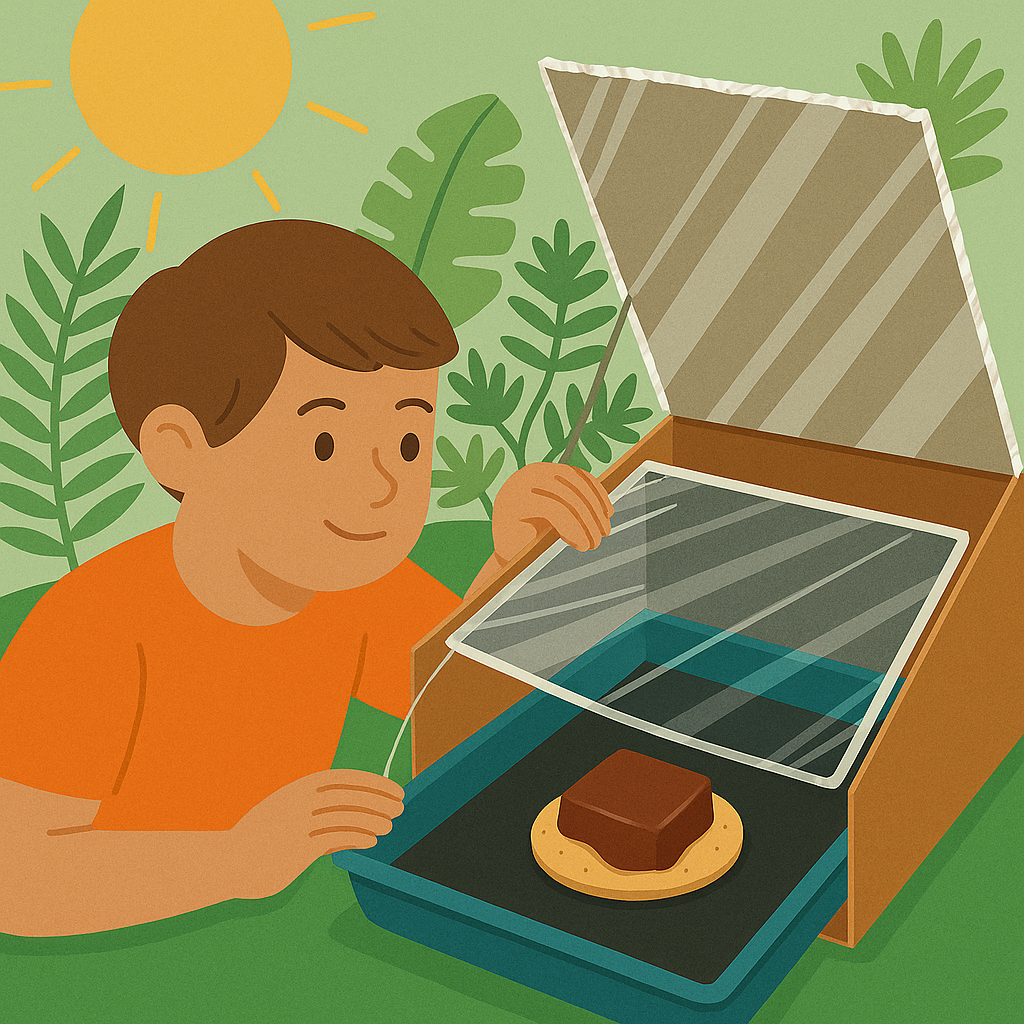
Soil Power Lab: Renewable Energy Experiments for Eco Kids
From Passive Learners to Energy Innovators
Most children know electricity powers lights and devices. But few realise we can generate power using nothing but soil, food waste, or sunlight. This activity challenges them to think beyond plug sockets — to discover the silent power of the Earth.
These experiments help shift children from passive users of energy to creative producers. When kids build their own working circuit using mud, or concentrate solar heat to melt chocolate, energy suddenly feels real, exciting, and within their control. And when they share their results with others, they don’t just absorb knowledge — they spread it.
Encouraging children to explore sustainable energy in a playful, visual way builds foundational awareness of clean power. These small actions, repeated across classrooms and living rooms, help raise a generation that is curious, capable, and conscious.
Sustainability + Simple Circuits + DIY Engineering
This lab combines concepts from:
- Environmental science – exploring earth materials, microbial ecosystems, and the sun’s radiant energy
- Basic circuitry – introducing voltage, resistance, and current in a fun, tangible way
- Maker mindset – reusing household items for innovation
- Systems thinking – showing how small changes scale up to big solutions
Children don’t need expensive kits or lab tools. With a pizza box, garden soil, and their own ideas, they’re empowered to build real things that solve real-world problems. The focus is not just on fun — it’s on function, creativity, and confidence.
Mission 1: Mud Battery – Power from the Ground Up
Objective
To explore microbial fuel cells and demonstrate how mud and metal can generate electricity
Materials
- 2 plastic cups or yogurt containers
- Alligator clips / wires
- LED bulb or mini digital clock
- Copper wire (or copper strip)
- Zinc strip or galvanized nail
- Garden soil (moist)
- Water, optional salt
Instructions
- Fill two cups with moist soil.
- Insert copper wire into one side of each cup and zinc nail into the opposite side.
- Connect the zinc of one cup to the copper of the next with a wire.
- Attach remaining wires from copper and zinc terminals to an LED or clock.
- Observe the light flicker or clock turn on!

Explanation
Soil contains microbes that produce electrons when breaking down organic matter. The metals act as electrodes to collect this charge and pass it through the circuit.
Microbial fuel cells (MFCs) are being tested globally as sustainable power sources — from remote water sensors to wastewater treatment plants. This experiment is a simplified version that introduces children to emerging green technology.
Discussion
- How can mud create power?
- What kind of soil works best?
- Could we use compost or food scraps too?
- Can we measure the voltage using a multimeter?
Classroom Tip: Add a voltmeter or data table to track daily output changes. Let students compare dry vs wet soil.
Mission 2: Solar Oven Build – Harnessing Heat from the Sky
Objective
To demonstrate how sunlight can be captured and converted into usable heat energy
Materials
- Pizza box or small cardboard box with lid
- Aluminium foil
- Black paper or black fabric
- Cling wrap or plastic sheet
- Tape, scissors
- Small plate, marshmallows, chocolate
Instructions
- Cut a flap in the pizza box lid (3 sides only).
- Cover the inside of the flap with foil to reflect light.
- Line the bottom of the box with black paper.
- Stretch cling wrap over the open window (under the flap).
- Place your s’mores or chocolate on a small plate inside the box.
- Position flap to direct sunlight inside and wait 30–60 mins.

Explanation
Black absorbs heat; foil reflects light inward; plastic traps warm air. Together, these create a simple greenhouse effect.
Solar ovens are used around the world where electricity is scarce — to cook food, purify water, and even bake bread. This project gives children a window into solar engineering and resource-saving practices.
Discussion
- How does this relate to solar panels?
- Why use black paper inside?
- Could you cook something with just sunshine?
- What else could you design using sunlight?
Family Challenge: Try melting chocolate, then attempt to warm popcorn kernels. Compare results on a sunny vs cloudy day.
Quick Variants
- Compost Power Comparison: Set up small samples (banana peel, shredded paper, leftover rice) and monitor how fast they heat up or decay — simulate biofuel breakdown.
- Mini Solar Car Kit: Use small solar cells and motor sets (kits or DIY) to build tiny vehicles powered by light.
- Plastic Bottle Greenhouse: Use 2L bottles to trap heat and observe seedling growth — ties into both energy and plant science.
Free Downloads (PDF Toolkit)
Download the Soil Power Lab PDF Pack, which includes:
- Mud Battery Build Guide
- Solar Oven Step-by-Step Sheet
- Energy Discussion Prompt Cards
- Soil Power Lab Data Recording Chart
- Bonus: DIY Compost Challenge Tracker
- Bonus: Sun vs Mud Scoreboard Template
Giving Kids the Power to Power the Planet
These aren’t just cute science experiments. They’re invitations — for kids to take energy into their own hands and realise that clean power isn’t far away or futuristic.
This lab doesn’t just support science education. It fosters confidence, innovation, and care for the planet. Kids leave knowing they can create solutions using what’s already around them.
“From backyard soil to sunshine on a shoebox — energy is everywhere if you know how to look.”
Encourage families to document their results and share with us. Host a school-wide “Sun vs Mud” energy challenge. Let kids vote on most creative designs or track energy output over days.
Because the future of energy might just begin in a kid’s garden box — and that spark starts with play.




